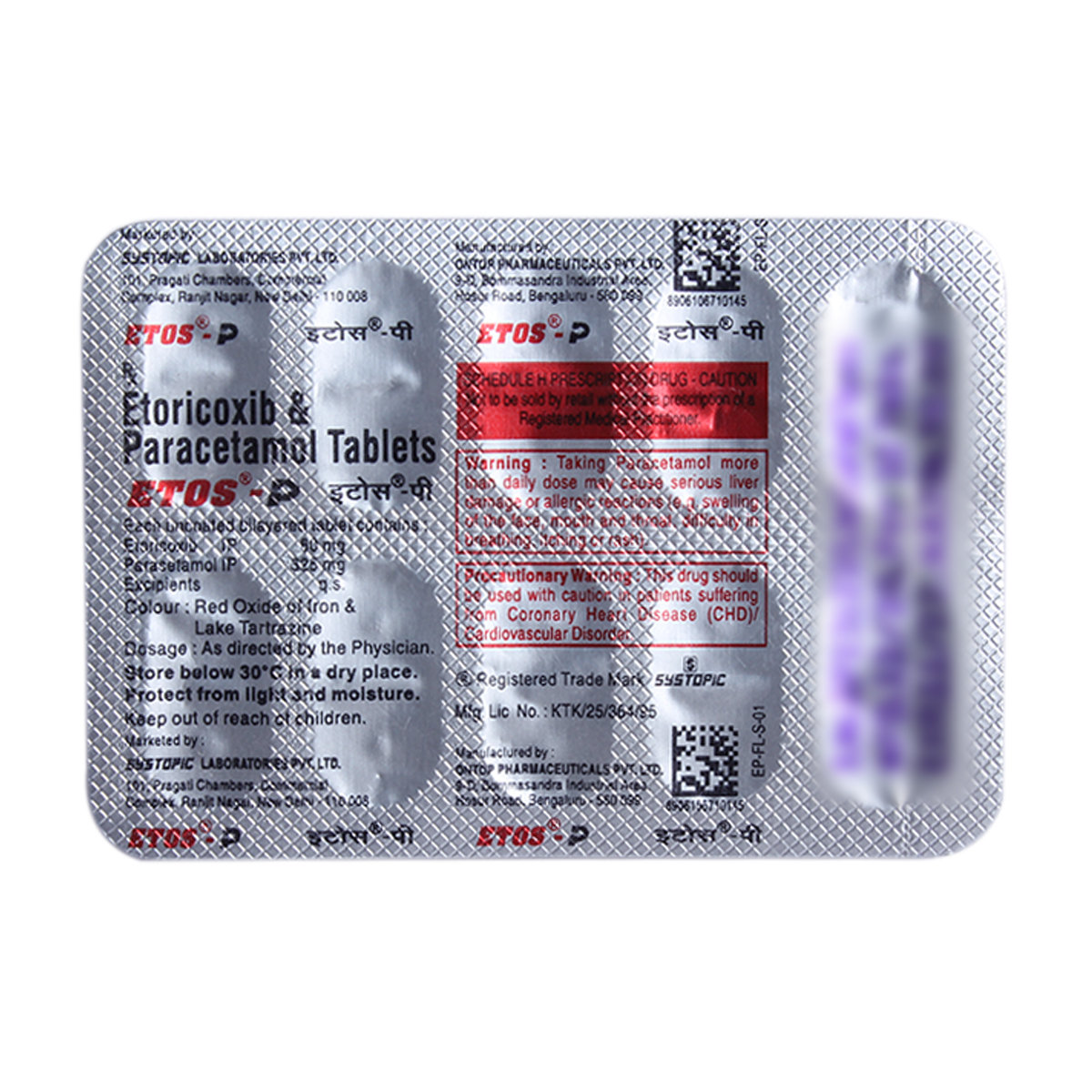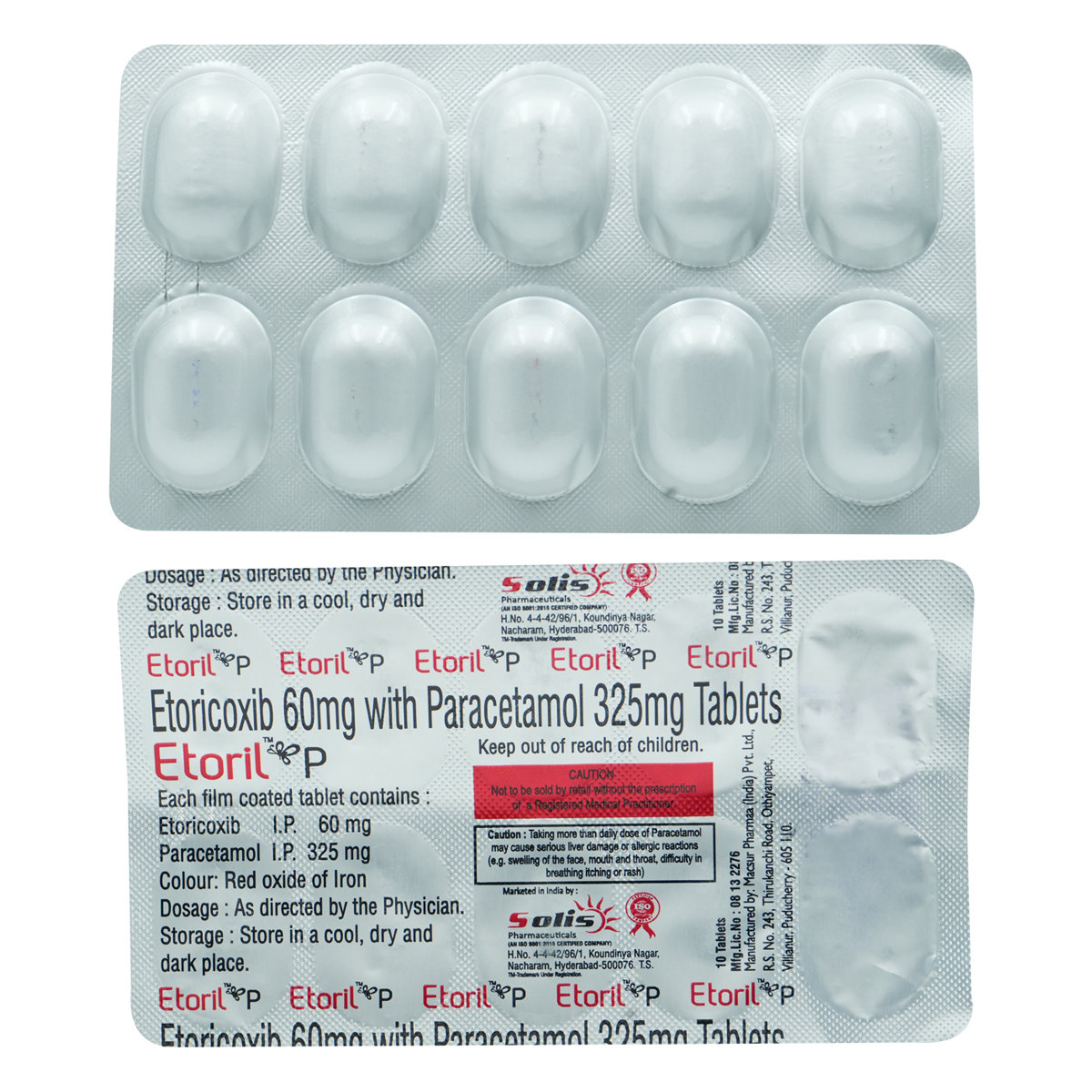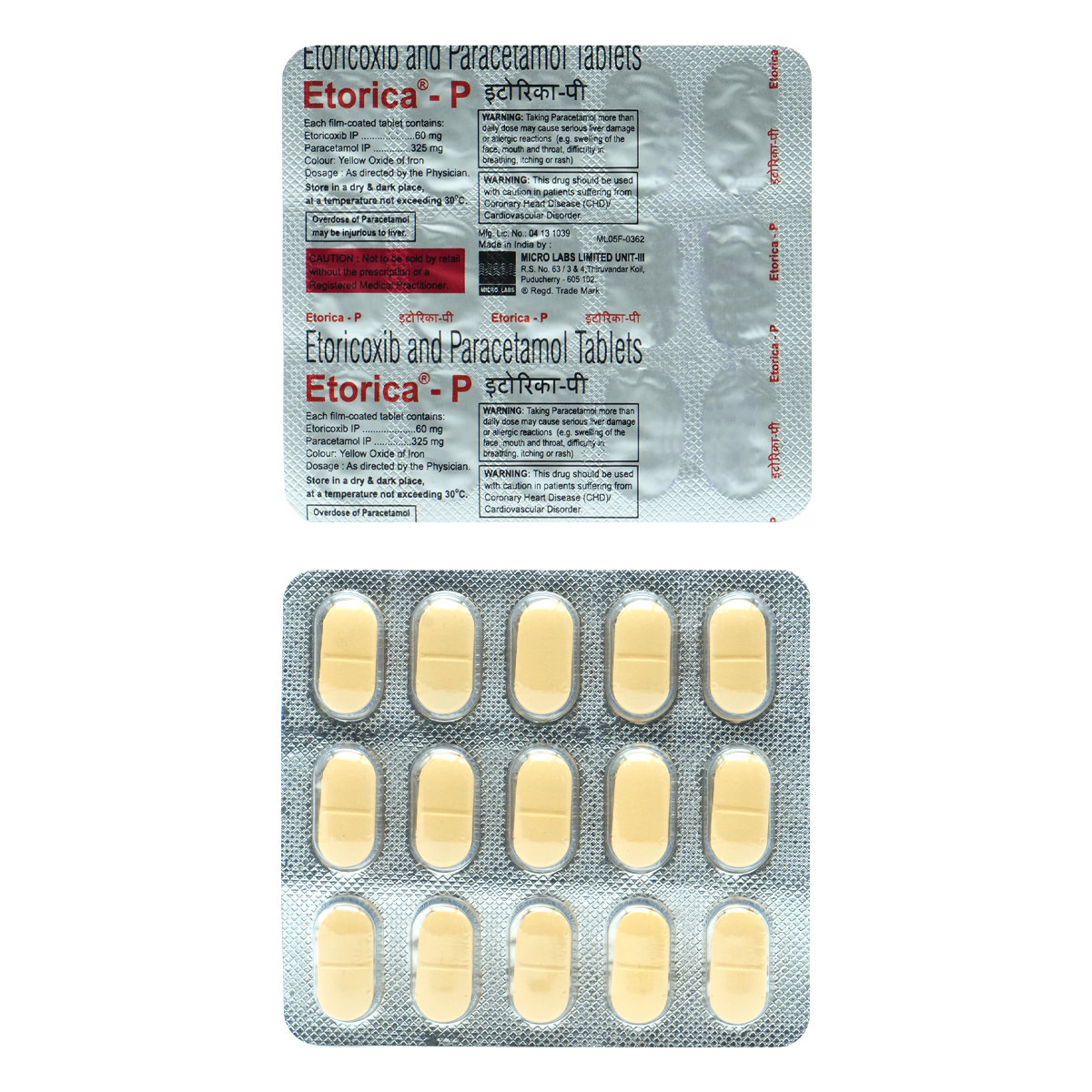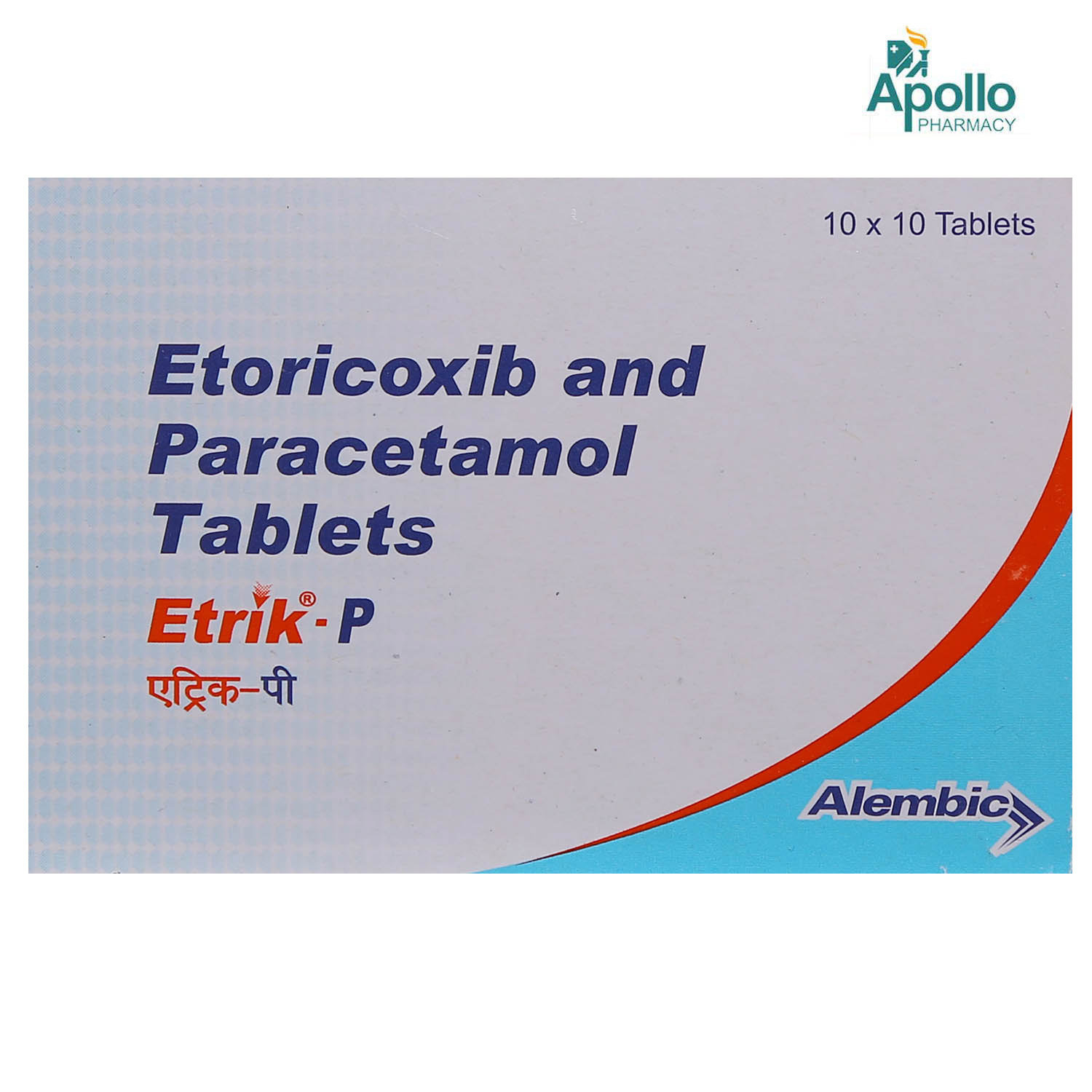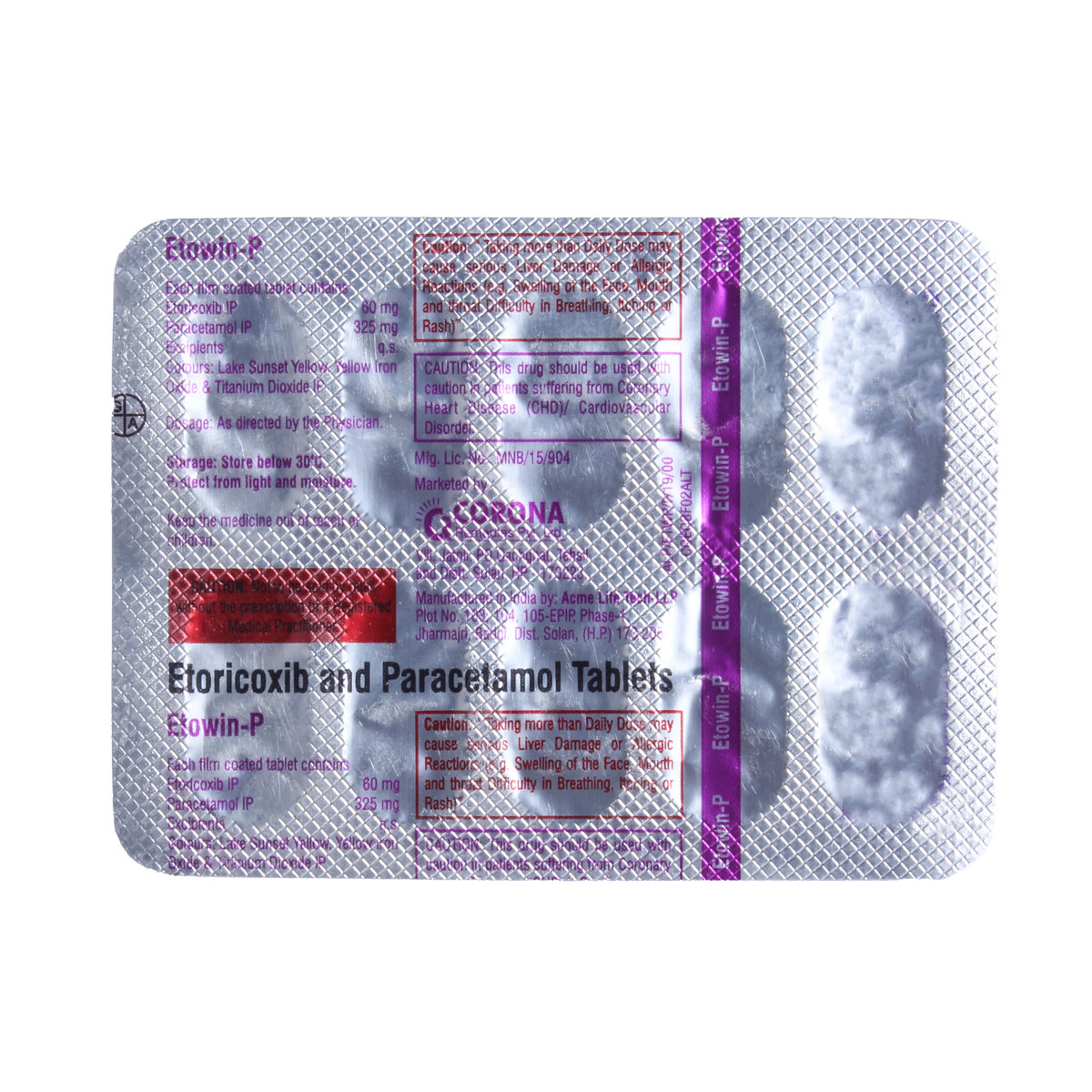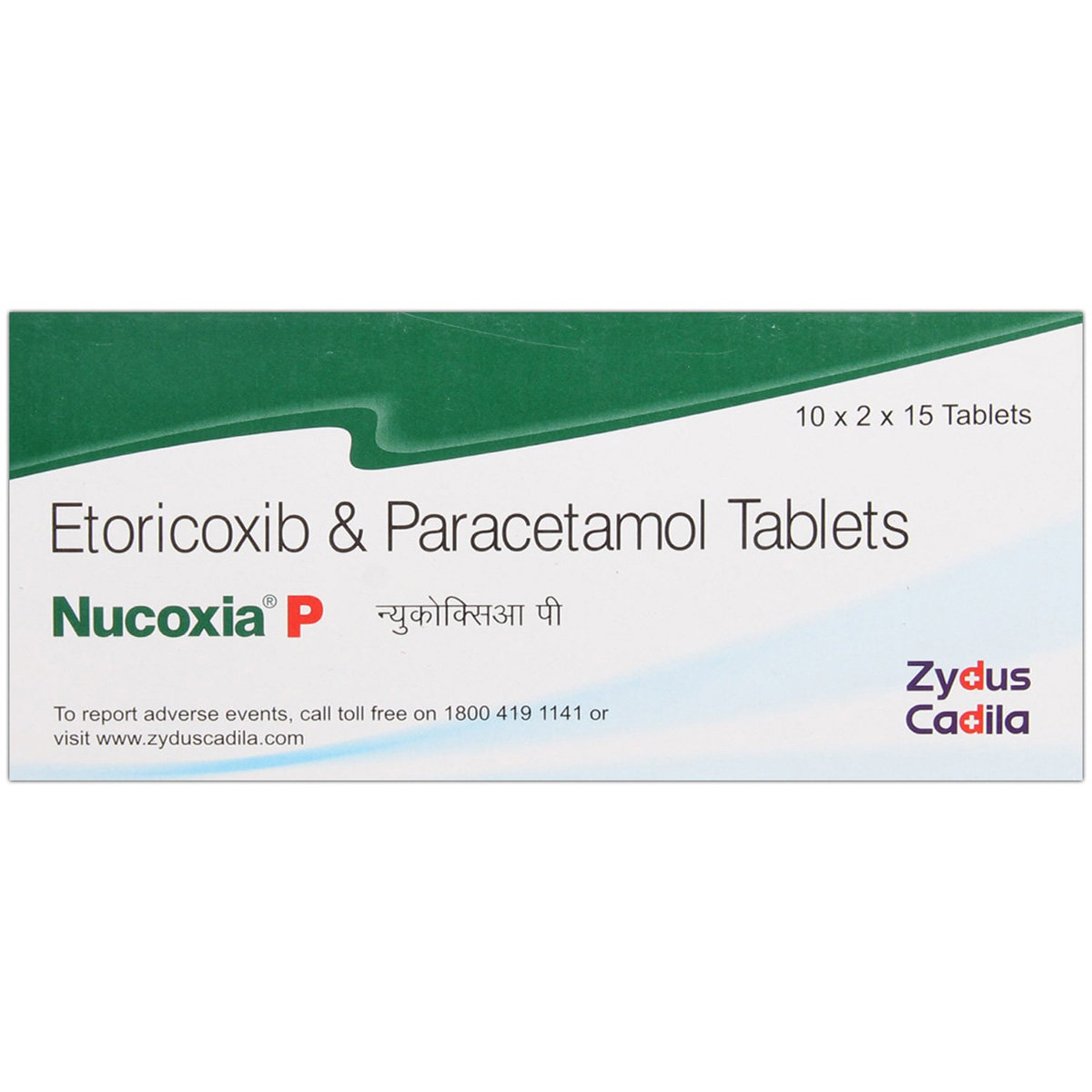Brutaflam Plus Tablet

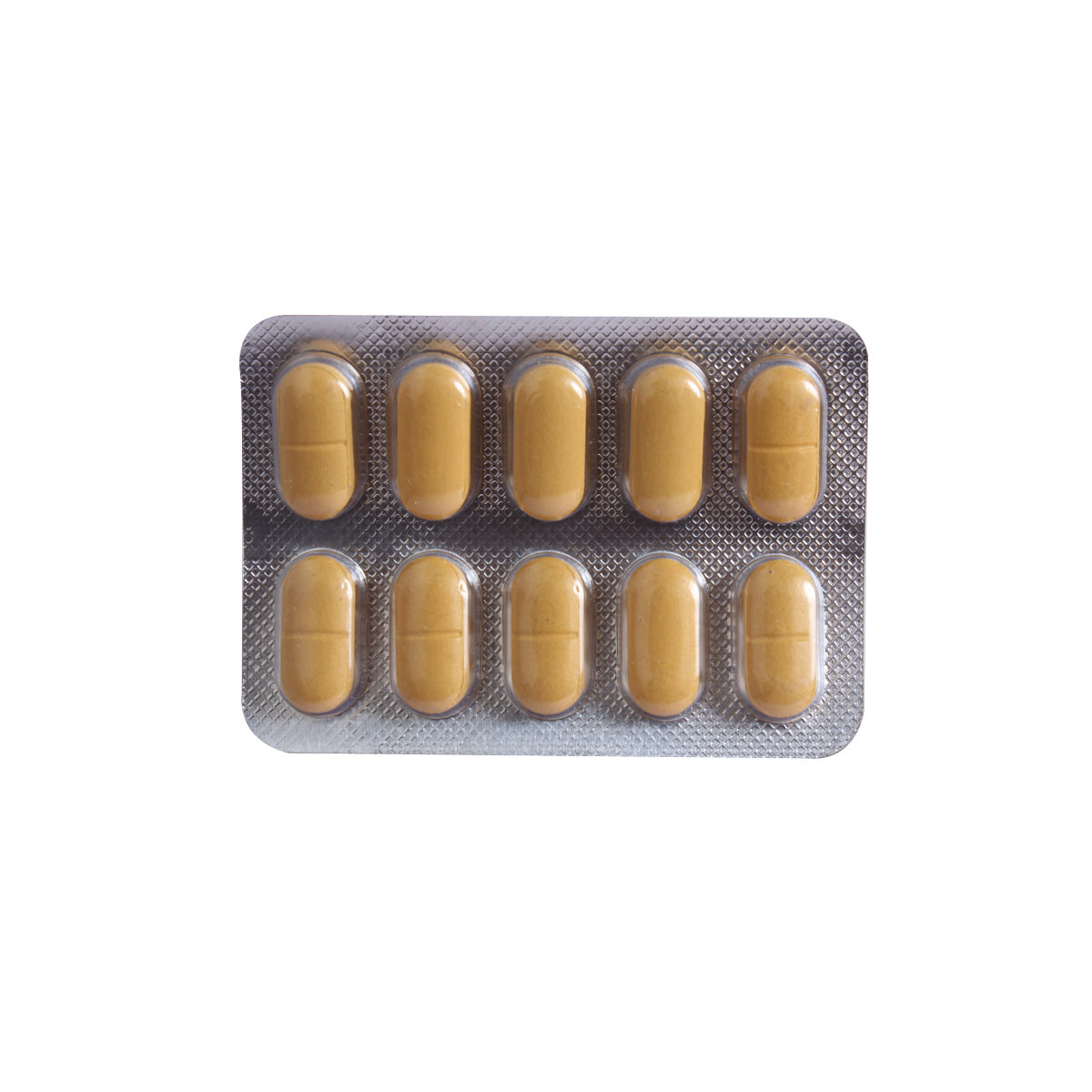
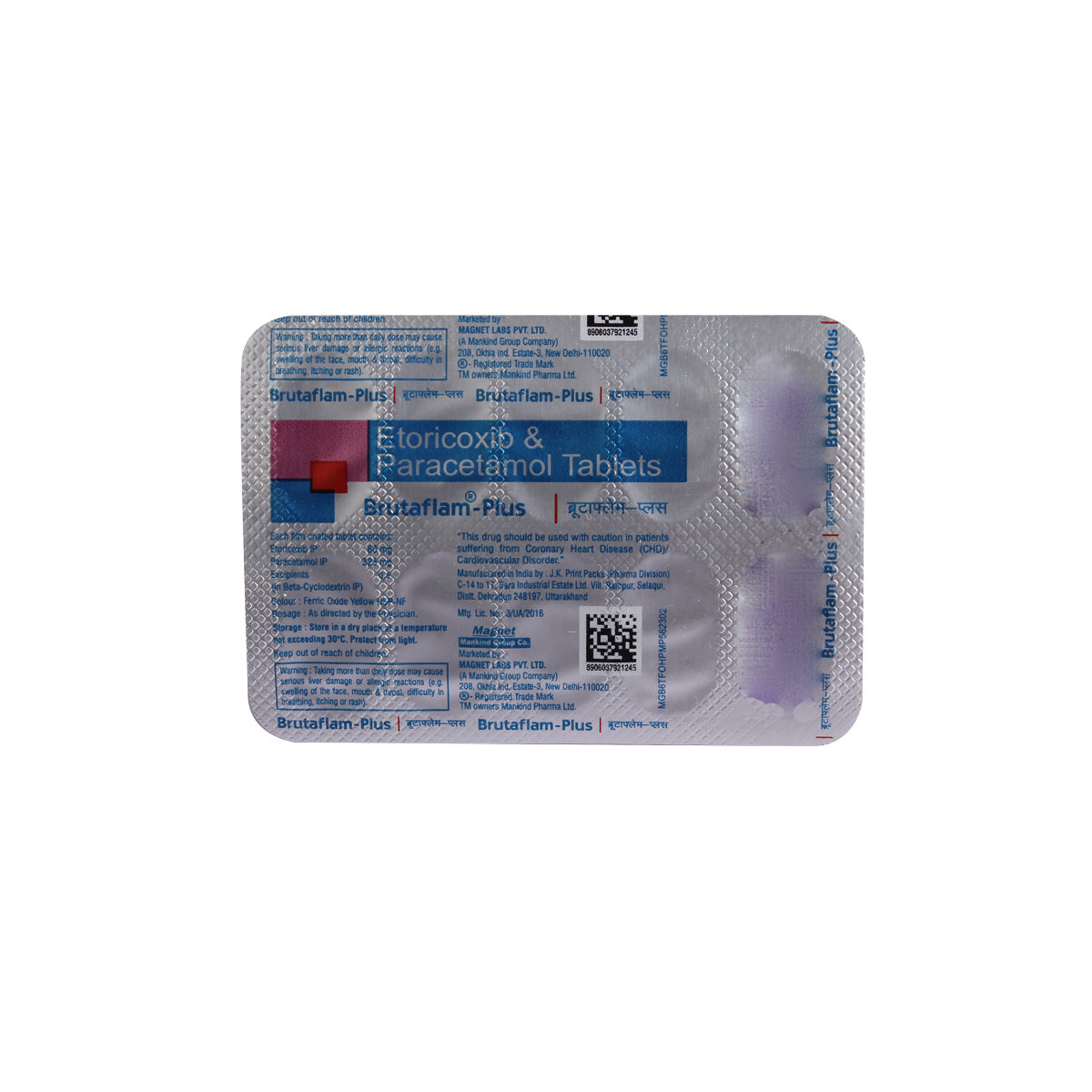
MRP ₹124.5
(Inclusive of all Taxes)
₹18.7 Cashback (15%)
know your delivery time
Provide Delivery Location
Composition :
Manufacturer/Marketer :
Consume Type :
Expires on or after :
Return Policy :

Secure Payment

Trusted by 8 Crore Indians

Genuine Products
Therapeutic Class
Country of origin
Manufacturer/Marketer address
Author Details
We provide you with authentic, trustworthy and relevant information
Disclaimer
Alcohol
Safe if prescribed
Avoid consumption of alcohol while taking Brutaflam Plus Tablet as it may cause increased drowsiness. It can also increase the risk of stomach bleeding.
Pregnancy
Consult your doctor
Please consult your doctor if you have any concerns regarding this; your doctor will prescribe only if the benefits outweigh the risks.
Breast Feeding
Consult your doctor
Please consult your doctor before taking Brutaflam Plus Tablet ; your doctor will decide whether Brutaflam Plus Tablet can be taken by breastfeeding mothers or not.
Driving
Safe if prescribed
Brutaflam Plus Tablet may cause dizziness and sleepiness. Do not drive or operate machinery unless you are alert.
Liver
Consult your doctor
Dose adjustment may be needed in patients with liver impairment. Please consult your doctor if you have a liver impairment or any concerns regarding this.
Kidney
Consult your doctor
Dose adjustment may be needed in patients with kidney impairment. Please consult your doctor if you have kidney impairment or any concerns regarding this.
Children
Safe if prescribed
Brutaflam Plus Tablet should not be given to children as the safety and effectiveness were not established.
Product Substitutes
About Brutaflam Plus Tablet
Brutaflam Plus Tablet belongs to a group of medicines called Non-Steroidal Anti-Inflammatory Drugs (NSAIDs) used to relieve pain and inflammation in the conditions such as osteoarthritis, rheumatoid arthritis, gouty arthritis, ankylosing spondylitis, tooth pain, headache, nerve pain, muscular pain, back pain, fever, cold, and flu. Pain is a symptom triggered by the nervous system, causing uncomfortable sensations in the body.
Brutaflam Plus Tablet is a combination of two drugs, namely: Etoricoxib and Paracetamol. Brutaflam Plus Tablet works by blocking the effect of a chemical messenger known as cyclo-oxygenase (COX) enzyme that makes another chemical prostaglandin which causes pain and inflammation. By blocking the effect of COX enzymes, lesser prostaglandins are produced. This helps in reducing mild to moderate pain and inflammation at the injured or damaged site.
You are advised to take Brutaflam Plus Tablet for as long as your doctor has prescribed it for you, depending on your medical condition. In some cases, you may experience certain common side-effects such as flatulence, constipation, nausea, diarrhoea, and swelling of hands and feet. Most of these side-effects do not require medical attention and will resolve gradually over time. However, you are advised to talk to your doctor if you experience these side-effects persistently.
Consult your doctor if you are pregnant or breastfeeding. Brutaflam Plus Tablet may cause sleepiness and dizziness, so drive with caution. Brutaflam Plus Tablet should not be given to children as safety and efficacy have not been established. Avoid consuming alcohol as it could lead to increased dizziness; it might also increase stomach bleeding risk. Keep your doctor informed about your health condition and medicines to rule out any side-effects.
Uses of Brutaflam Plus Tablet
Medicinal Benefits Mweb
Key Benefits
Brutaflam Plus Tablet is a combination of two Non-Steroidal Anti-Inflammatory Drugs (NSAIDs), namely: Etoricoxib and Paracetamol. Brutaflam Plus Tablet is used to relieve pain in osteoarthritis, rheumatoid arthritis, gouty arthritis and ankylosing spondylitis, tooth pain, headache, nerve pain, muscular pain, back pain, fever, cold, and flu. Brutaflam Plus Tablet works by blocking the effect of a chemical messenger known as cyclo-oxygenase (COX) enzyme that makes another chemical prostaglandin. These prostaglandins are produced at injury sites and cause pain and swelling. By blocking the effect of COX enzymes, lesser prostaglandins are produced. This helps in reducing mild to moderate pain and inflammation at the injured or damaged site.
Directions for Use
Side Effects of Brutaflam Plus Tablet
- Flatulence
- Constipation
- Nausea
- Diarrhoea
- Swelling of hands and feet (oedema)
- Skin rash
Drug Warnings
Do not take Brutaflam Plus Tablet if you are allergic to Brutaflam Plus Tablet or other NSAIDs. Inform your doctor if you have stomach ulcers, or have suffered bleeding problems, clotting problems, inflammatory bowel disease, heart failure, high blood pressure, diabetes, high cholesterol, severe heart, liver or kidney problems. If you have had any recent heart surgery, do not take Brutaflam Plus Tablet unless prescribed by the doctor, as Brutaflam Plus Tablet may increase the risk of heart attack or stroke. Consult your doctor if you are pregnant or breastfeeding. Brutaflam Plus Tablet may cause sleepiness and dizziness, so drive only if you are alert. Brutaflam Plus Tablet should not be given to children as safety has not been established. Avoid consuming alcohol along with Brutaflam Plus Tablet as it could lead to increased drowsiness and can increase the risk of stomach bleeding. Stop taking Brutaflam Plus Tablet and consult your doctor immediately if you have stomach pain or any signs of bleeding in the intestine or stomach, such as blood in stools. Do not take any other NSAIDs for pain relief along with Brutaflam Plus Tablet unless prescribed.
Drug-Drug Interactions
Drug-Drug Interactions
Login/Sign Up
Co-administration of Brutaflam Plus Tablet may decrease the excretion rate of Oxazepam which could result in a higher serum level.
How to manage the interaction:
Although there is a possible interaction between Oxazepam and Brutaflam Plus Tablet, you can take these medicines together if prescribed by a doctor. Do not stop using any medications without a doctor's advice.
Co-administration of ketamine and Brutaflam Plus Tablet may decrease the effectiveness of Ketamine which could result in a higher blood level.
How to manage the interaction:
Although taking Ketamine and Brutaflam Plus Tablet together can evidently cause an interaction, it can be taken if a doctor has suggested it. If you're feeling very sleepy or having trouble breathing, it's important to contact your doctor right away. Do not stop using any medications without a doctor's advice.
Co-administration of Teriflunomide with Brutaflam Plus Tablet may increase the risk or severity of Liver problems.
How to manage the interaction:
Taking Brutaflam Plus Tablet with Teriflunomide together can possibly result in an interaction, but it can be taken if a doctor has advised it. Do not discontinue any medications without consulting a doctor.
Co-administration of Brutaflam Plus Tablet and Ketoconazole may increase the risk of liver injury.
How to manage the interaction:
Although there is a possible interaction between Brutaflam Plus Tablet and Ketoconazole, you can take these medicines together if prescribed by a doctor. However, if you have joint pain or swelling, fever, chills, unusual bleeding or bruising, skin rash, itching, over-tiredness, nausea, vomiting, loss of appetite, stomach pain, dark-colored urine, light-colored stools, and/or yellowing of the skin or eyes, contact a doctor immediately as these may be signs and symptoms of liver damage. Do not discontinue the medication without consulting a doctor.
Co-administration of Brutaflam Plus Tablet and Leflunomide may increase the risk of liver problems.
How to manage the interaction:
Although there is a possible interaction between Brutaflam Plus Tablet and Leflunomide, they can be taken together if prescribed by a doctor. However, if you experience fever, chills, joint pain or swelling, unusual bleeding or bruising, skin rash, itching, less desire to eat, fatigue, nausea, vomiting, abdominal pain, or yellowing of the skin or eyes, contact a doctor immediately. Do not discontinue any medications without consulting a doctor.
Co-administration of Brutaflam Plus Tablet and Valdecoxib may increase the risk or severity of adverse effects.
How to manage the interaction:
Although there is a possible interaction between Brutaflam Plus Tablet and Valdecoxib, you can take these medicines together if prescribed by a doctor. However, if the side effects worsen, please consult a doctor.
Co-administration of Lomitapide and Brutaflam Plus Tablet may increase the risk of severity of liver injury.
How to manage the interaction:
Although there is a possible interaction between Brutaflam Plus Tablet and Lomitapide, you can take these medicines together if prescribed by a doctor. Do not stop using any medications without a doctor's advice.
Co-administration of Mipomersen with Brutaflam Plus Tablet may increase the risk or severity of liver injury.
How to manage the interaction:
There may be a possibility of interaction between Brutaflam Plus Tablet and Mipomersen, but it can be taken if prescribed by a doctor. Do not stop using any medications without talking to a doctor.
Drug-Food Interactions
Drug-Food Interactions
Login/Sign Up
Drug-Diseases Interactions
Drug-Diseases Interactions
Login/Sign Up
Drug-Drug Interactions Checker List
- ASPIRIN
- WARFARIN
- SALBUTAMOL
- LITHIUM
- ENALAPRIL
- RAMIPRIL
- LOSARTAN
- VALSARTAN
- MINOXIDIL
- DIGOXIN
- RIFAMPICIN
- RANITIDINE
- CYCLOSPORINE
- TACROLIMUS
- METOCLOPRAMIDE
- DOMPERIDONE
- CHOLESTYRAMINE
Habit Forming
Special Advise
- Brutaflam Plus Tablet might cause changes in blood tests. Inform the person doing the tests that you are taking Brutaflam Plus Tablet .
Diet & Lifestyle Advise
- Physical activity helps in strengthening muscles and relieves joint stiffness. Gentle activities like 20-30minutes of walking or swimming would be helpful.
- Performing yoga may also help in improving joint flexibility and pain management.
- Maintain a healthy weight by performing regular low-strain exercises and eating healthy food.
- Get adequate sleep, as resting the muscles can help in reducing inflammation and swelling.
- Follow heat or cold therapy; apply a cold or hot compress on the joints for 15-20minutes regularly.
- De-stress yourself by meditating, reading books, taking a warm bubble bath or listening to soothing music.
- Acupuncture, massage and physical therapy may also be helpful.
- Eat food rich in antioxidants such as berries, spinach, kidney beans, dark chocolate, etc.
- Foods containing flavonoids help in reducing inflammation. These include soy, berries, broccoli, grapes and green tea.
- Avoid smoking and alcohol consumption.
All Substitutes & Brand Comparisons
RX
Etos-P Tablet 10'S
Systopic Laboratories Pvt Ltd
₹60
(₹5.4 per unit)
51% CHEAPERRX
Ecbdol Tablet 10's
Blisson Mediplus Pvt Ltd
₹69
(₹6.21 per unit)
44% CHEAPERRX
Etoflam-P 60 mg Tablet 10's
Cadila Pharmaceuticals Ltd
₹75
(₹6.75 per unit)
39% CHEAPER
Buy best C.n.s Drugs products by
Intas Pharmaceuticals Ltd
Sun Pharmaceutical Industries Ltd
Torrent Pharmaceuticals Ltd
Alkem Laboratories Ltd
Abbott India Ltd
Cipla Ltd
Alteus Biogenics Pvt Ltd
Micro Labs Ltd
Lupin Ltd
Ipca Laboratories Ltd
D D Pharmaceuticals Pvt Ltd
Icon Life Sciences
Mankind Pharma Pvt Ltd
Tripada Healthcare Pvt Ltd
Arinna Lifesciences Ltd
Linux Laboratories Pvt Ltd
East West Pharma India Pvt Ltd
La Renon Healthcare Pvt Ltd
Talent India Pvt Ltd
Tas Med India Pvt Ltd
Zydus Healthcare Ltd
Cnx Health Care Pvt Ltd
Eris Life Sciences Ltd
Leeford Healthcare Ltd
Emcure Pharmaceuticals Ltd
Macleods Pharmaceuticals Ltd
Sigmund Promedica
Aristo Pharmaceuticals Pvt Ltd
Dr Reddy's Laboratories Ltd
Troikaa Pharmaceuticals Ltd
Consern Pharma Ltd
Zydus Cadila
Shine Pharmaceuticals Ltd
Wockhardt Ltd
Ardent Life Sciences Pvt Ltd
Crescent Formulations Pvt Ltd
Theo Pharma Pvt Ltd
Reliance Formulation Pvt Ltd
Ikon Pharmaceuticals Pvt Ltd
Propel Healthcare
Neon Laboratories Ltd
Jagsam Pharma
Msn Laboratories Pvt Ltd
Morepen Laboratories Ltd
Pulse Pharmaceuticals
Sanofi India Ltd
Med Manor Organics Pvt Ltd
Hetero Healthcare Pvt Ltd
Novartis India Ltd
Crescent Therapeutics Ltd
Elder Pharmaceuticals Ltd
Solvate Laboratories Pvt Ltd
Akumentis Healthcare Ltd
Mova Pharmaceutical Pvt Ltd
Psyco Remedies Ltd
Tripada Lifecare Pvt Ltd
Ajanta Pharma Ltd
Cyrus Remedies Pvt Ltd
Medishri Healthcare Pvt Ltd
Cadila Healthcare Ltd
Glenmark Pharmaceuticals Ltd
Matteo Health Care Pvt Ltd
Hbc Life Sciences Pvt Ltd
Lyf Healthcare
Matias Healthcare Pvt Ltd
Mesmer Pharmaceuticals
Alembic Pharmaceuticals Ltd
Capital Pharma
Crescent Pharmaceuticals
Medopharm Pvt Ltd
Alniche Life Sciences Pvt Ltd
Kivi Labs Ltd
Talin Remedies Pvt Ltd
USV Pvt Ltd
Quince Lifesciences Pvt Ltd
Solis Pharmaceuticals
Infivis Life Care
Zuventus Healthcare Ltd
Cadila Pharmaceuticals Ltd
Pfizer Ltd
Wallace Pharmaceuticals Pvt Ltd
A N Pharmacia Laboratories Pvt Ltd
Blue Cross Laboratories Pvt Ltd
Jenburkt Pharmaceuticals Ltd
Lia Life Sciences Pvt Ltd
Mano Pharma
Medley Pharmaceuticals Ltd
Primus Remedies Pvt Ltd
FDC Ltd
Maneesh Pharmaceuticals Ltd
Apex Laboratories Pvt Ltd
Gagnant Healthcare Pvt Ltd
Ozone Pharmaceuticals Ltd
RPG Life Sciences Ltd
Strides Shasun Ltd
Unichem International
GlaxoSmithKline Pharmaceuticals Ltd
Kuresys Labs Pvt Ltd
LA Pharma
Trion Pharma India Llp

_0.jpg?tr=q-85)

